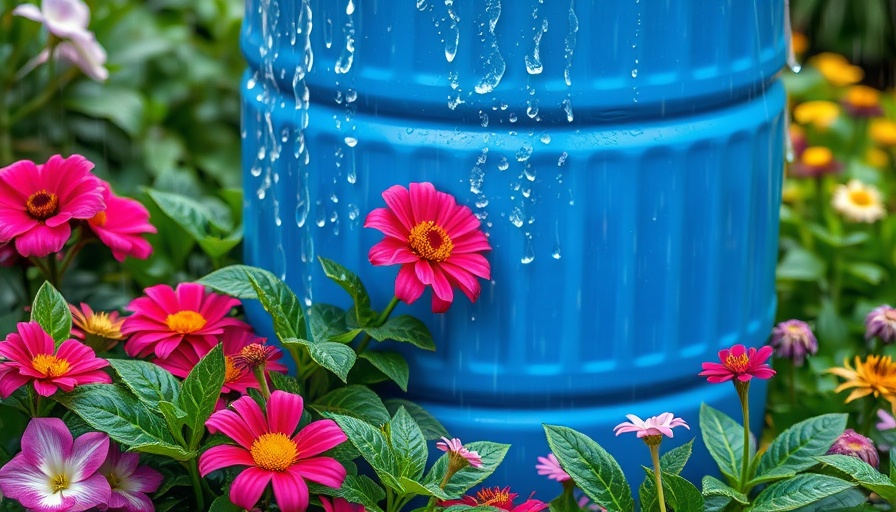
Embracing Rainwater: The Sustainable Choice for Young Homeowners
For young homeowners in London, embracing sustainable living practices is not only a trend but a necessity. Collecting rainwater is a simple yet effective way to nurture your garden while reducing your carbon footprint. However, according to gardening experts, there's one critical exception when using rainwater could harm your green oasis.
When to Avoid Rainwater: An Important Reminder
While rainwater is often called the gardener's elixir, it is essential to consider its source. If you live in a bustling area, roof runoff can pick up harmful contaminants from your environment. Contaminants like heavy metals, pesticides, or residues from chimneys can inadvertently make their way into your watering can. This is a significant factor to consider if you tend to sensitive plants that may be negatively affected by these elements.
How to Keep Your Rainwater Clean and Safe
Collecting rainwater is easy; you can use a barrel or simply place your watering can outside during a downpour. But cleanliness is paramount. Experts recommend keeping your collection containers covered with a lid or fine mesh to prevent leaves, insects, and algae from contaminating the water. Always opt for fresh rainwater that has not sat stagnant for more than a day to ensure your plants get the healthiest drink possible.
The Surprising Benefits of Using Rainwater
Rainwater comes with an array of benefits, making it a desirable choice for your garden. It is soft and slightly acidic, which makes it a more pleasant option compared to tap water. Tap water contains chemicals such as chlorine that can harm more delicate plant varieties. The gentle hydration provided by rainwater allows plants to absorb essential minerals easily, leading to healthier root development.
Practical Tips for Collection and Storage
To maximize the utility of rainwater, consider incorporating rain barrels into your garden design. Not only will this save you money on water bills, but it also contributes to a more sustainable home. Install a rainwater harvesting system to collect water from your roof effectively or use decorative containers to complement your garden’s aesthetics. Remember to clean these containers with eco-friendly solutions to keep contaminants at bay.
Embracing Eco-Friendly Practices in Your Home
As part of a broader sustainable lifestyle, rainwater collection beautifully complements other eco-friendly practices such as composting and using organic gardening methods. Moreover, the financial benefits can be significant as well, reducing not just water bills but contributing to a more sustainable environment. This holistic approach not only nourishes your plants but also ensures a thriving ecosystem around your home.
Community Efforts in Sustainable Gardening
Many local gardening groups in London are focusing on sharing knowledge about sustainable practices like rainwater harvesting. Collaborating with neighbors and participating in local workshops enhance your gardening experience and create community connections through shared initiatives. Engaging in these activities can provide invaluable insights from experienced gardeners while forming bonds over common goals.
A Call to Action: Make Sustainable Choices
As young homeowners, every step taken toward sustainable living counts significantly. By investing in practices such as rainwater collection, you not only nurture your plants but foster an eco-friendly environment. Take action today by setting up a rainwater collection system and share your commitment to sustainability within your community. Together, we can cultivate greener spaces and support healthier lifestyles.
 Add Row
Add Row  Add
Add 




Write A Comment